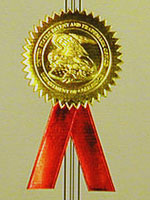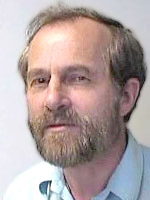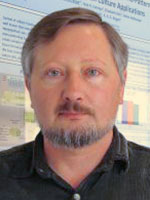Recent News
CHTM Joins NSF's NQVL Pilot Projects
August 9, 2024
OSE PHD, Dr. Xuefeng Li - Wins The Outstanding Interdisciplinary Graduate Programs Award
May 10, 2024
Dr. Ali Rastegari - 2024 OSE Best Dissertation Award Winner
May 10, 2024
2024 OSE Spring and Summer Graduates
May 10, 2024
News Archives
U.S. Patent issued to Osiński et al. for "Halide-based scintillator nanomaterial"
May 10, 2017

U.S. Patent No. 9,644,141, “Halide-based scintillator nanomaterial," has been issued to Osiński et al by the U.S. Patent & Trademark Office (USPTO). Marek Osiñski is a Professor with The University of New Mexico's (UNM) Department of Electrical and Computer Engineering (ECE) and the Center for High Technology Materials (CHTM). The inventors also include Gennady Smolyakov, a Research Associate Professor with ECE and CHTM, Nathan Withers and Brian Akins in New Mexico, and Krishnaprasad Sankar in Oregon.
Abstract
A heterogeneous scintillator material is provided comprising core/shell nanoparticles having a highly hygroscopic or deliquescent halide-based core activated with trivalent Ln.sup.3+ or divalent Ln.sup.2+ lanthanide ions (Ln=La, Ce, Pr, Nd, Pm, Sm, Eu, Gd, Tb, Dy, Ho, Er, Tm, Yb, Lu) and a stable non-hygroscopic shell thereon. The heterogeneous nanoparticles can comprise highly hygroscopic lanthanide halide (LaBr.sub.3, LuI.sub.3) cores protected with stable non-hygroscopic LaF.sub.3 shells. The heterogeneous nanoparticles can comprise deliquescent alkaline earth halide (SrI.sub.2, BaI.sub.2) cores protected with stable non-hygroscopic (SrF.sub.2, BaF.sub.2) shells.
Background
Semiconductor nanocrystals (NCs) or quantum dots (QDs) have been extensively investigated over the last decade for a variety of biomedical, biochemical sensing, and optoelectronic applications. An area that has received relatively little attention so far is the use of NCs as gamma or X-ray detectors in applications such as positron emission tomography (PET), digital radiography, dosimetry, and nuclear medicine. In a typical radiation detection system, conversion of the incident energy of ionizing radiation is accomplished by using scintillating materials that emit photons in the visible/UV spectral range, subsequently collected by a photosensitive element.

Marek Osinski
Marek Osiński holds joint professorships with UNM's Physics and Astronomy and Computer Science departments. He is also an ECE member of the Optical Science and Engineering (OSE) Graduate Committee, the governing body of the OSE program.
Osiński is a Fellow of the International Society for Optical Engineering (SPIE) (‘02); a Fellow of the Optical Society of America (OSA) (’03); a Fellow of the Institute of Electrical and Electronic Engineers (IEEE), IEEE Lasers and Electro-Optics Society, and IEEE Engineering in Medicine and Biology Society (‘15); and a member of the Materials Research Society. He has authored or co-authored over 500 technical papers and five book chapters. He also co-edited 23 books of SPIE conference proceedings on “Physics and Simulation of Optoelectronic Devices” and 18 other SPIE volumes in the fields of advanced high-power lasers, optoelectronics, nano-biophotonics, and colloidal nanoparticles for biomedical applications.
Osiński holds 14 UNM-affiliated U.S. issued patents.
Osiński's main current research interests include semiconductor ring lasers, monolithically integrated optoelectronic circuits, colloidal nanocrystals for biomedical applications, nanoscintillators, nanophosphors, hybrid nanocrystals for solar hydrogen production, radiation effects on optoelectronic devices, neutron detectors, and comprehensive simulation of optoelectronic devices.

Gennady Smolyakov
Gennady Smolyakov is a Research Associate Professor with the UNM Department of Electrical and Computer Engineering (ECE) and the Center for High Technology Materials (CHTM). He is a member of the International Society of Optical Engineers (SPIE), and has over 100 publications, including one book chapter and 8 awarded patents.
Smolyakov's current research interests include optoelectronic devices; optics of waveguides; design and simulation of VCSELs and edge-emitting semiconductor injection lasers; physics and simulation of semiconductor quantum well and quantum dot devices; colloidal quantum dots for applications in biomedicine, radiation detection, and plasmonic solar water splitting.
Source:
U.S. Patent No. 9,644,141


